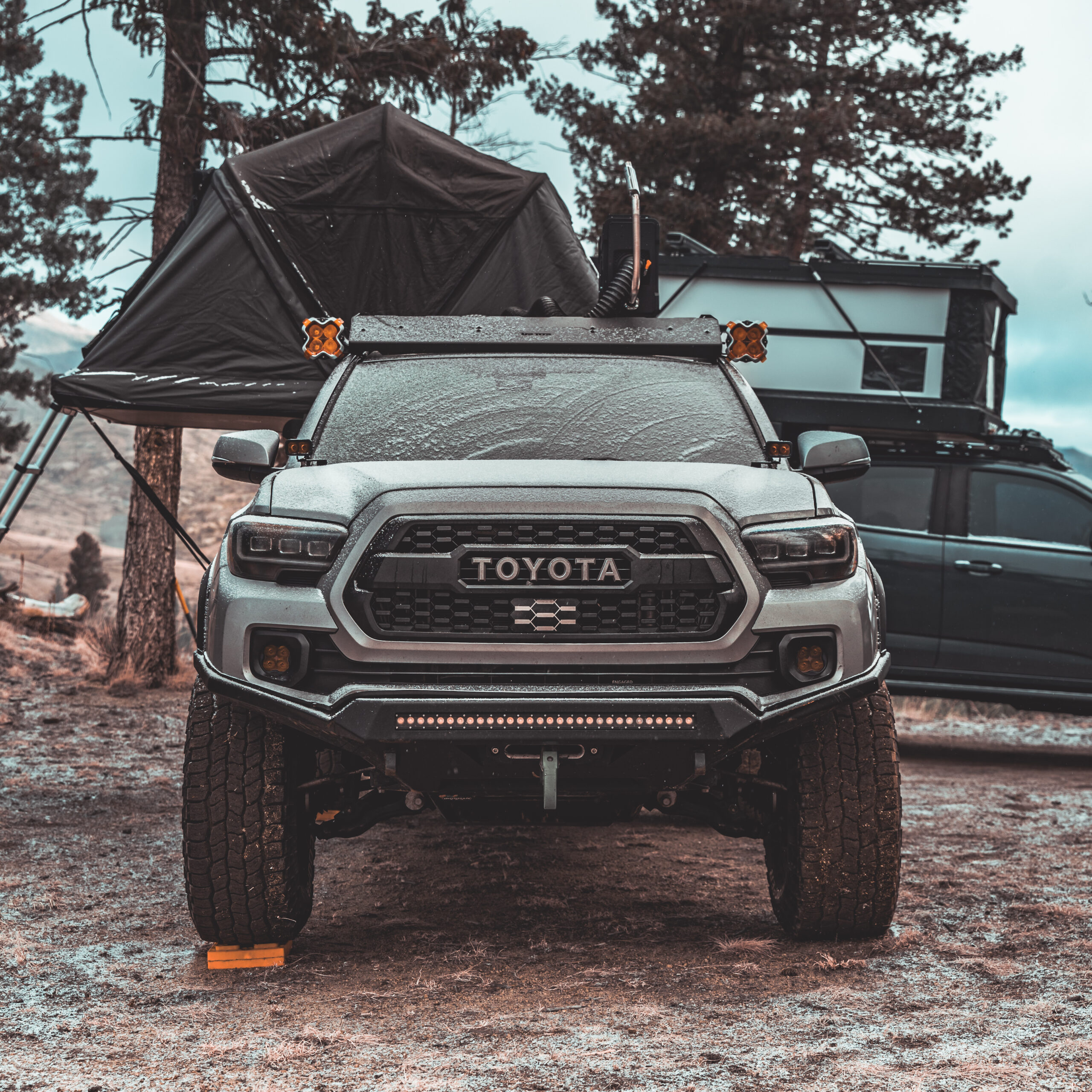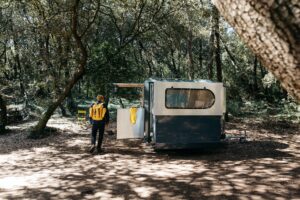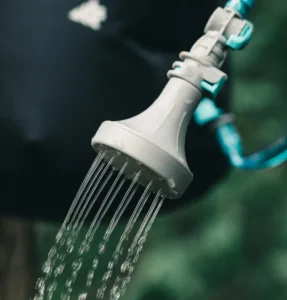Overlanding has rapidly evolved from a niche hobby to a mainstream outdoor pursuit, captivating adventurers worldwide. At the heart of every successful overlanding journey lies the right gear. But with the plethora of options available, how do you choose the best? In this comprehensive guide, we’ll delve deep into the essentials of overland camping gear, ensuring you’re well-equipped for your next expedition. From the evolution of overland vehicles to the importance of environmental responsibility, we’ve got you covered. So, buckle up and let’s embark on a journey to discover the top gear for overlanding and how to use it responsibly.
Table of Contents
Shelter and Accommodation: Your Home on the Move
When embarking on an overlanding adventure, one of the most fundamental considerations is where you’ll lay your head at night. The right shelter not only provides a place to rest but also offers protection from the elements. Let’s dive into the world of overlanding gear focused on shelter and accommodation.
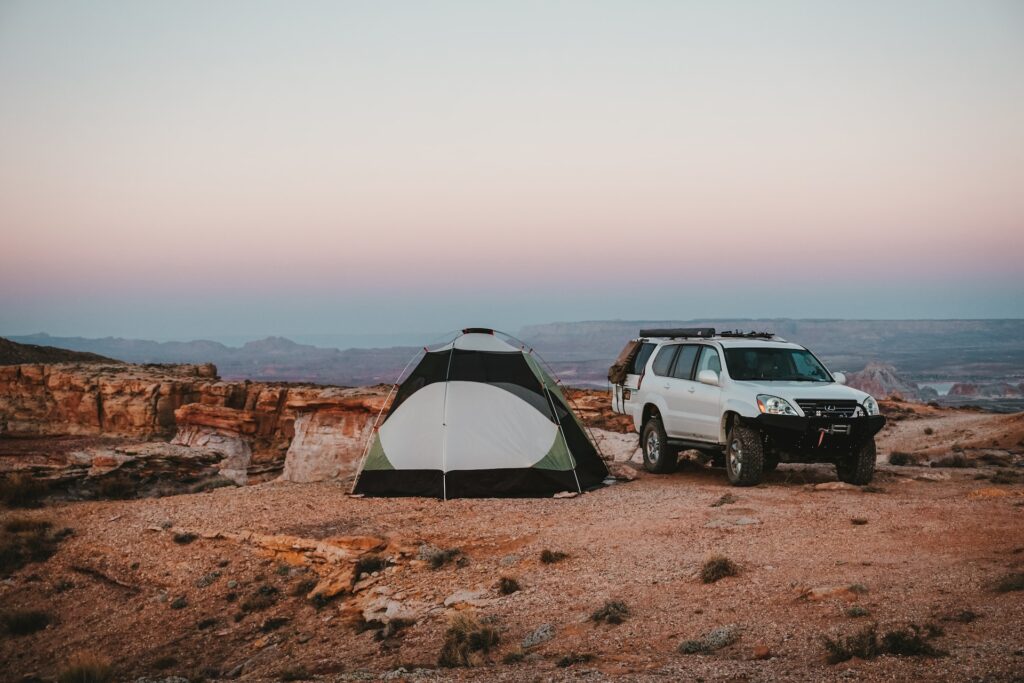
Rooftop Tents vs. Ground Tents
Over the years, rooftop tents have gained immense popularity among overlanders. These tents attach directly to the roof rack of your vehicle, elevating you off the ground. This elevation provides added protection from ground moisture, critters, and offers a unique vantage point of your surroundings.
On the other hand, ground tents have been the traditional choice for campers and overlanders alike. They are generally more spacious, offer a variety of shapes and sizes, and can be pitched anywhere you find suitable ground. Their versatility makes them a favorite for many.
Importance of Choosing the Right Sleeping Gear
Your tent is just the beginning. Equally crucial is the sleeping gear you choose. A good sleeping bag tailored to the climate of your destination ensures warmth and comfort. Pair it with a quality sleeping pad, and you’re set for a restful night.
Awnings: The Unsung Heroes
For those sunny or drizzly days, an awning is an overlander’s best friend. Attached to the side of your vehicle, awnings provide shade or shelter, extending your living space and offering a respite from the elements.
Navigation and Communication: Staying on Course and Connected
In the vast expanse of the great outdoors, two things are crucial for a successful overlanding trip: knowing where you’re going and being able to communicate. As you delve deeper into remote areas, the significance of reliable navigation and communication tools becomes even more pronounced.
Modern GPS Devices Tailored for Off-Roading
The days of relying solely on paper maps are long gone. Today’s GPS devices are designed with the off-roader in mind. They come loaded with topographical maps, trail data, and points of interest specific to overlanding. With features like offline map access, real-time tracking, and route recording, these devices are indispensable for the modern adventurer.
Smartphone Apps: The Digital Co-Pilot
While standalone GPS units are fantastic, don’t underestimate the power of your smartphone. Several apps cater specifically to overlanders, offering maps, trail conditions, and even user-generated content about specific routes. Apps like OnX Offroad, AllTrails, and TheDyrt are tailored for overland enthusiast.
Communication Tools in Remote Areas
When you’re miles away from the nearest town, staying connected can be a challenge. Traditional cell service might be spotty or non-existent.
Satellite Communicators: Devices that use satellite networks allow you to send messages, SOS alerts, and even access the internet from virtually anywhere on the planet.

Two-Way Radios: For group travels or caravans, two-way radios are a must. They provide instant communication between vehicles, especially in areas where cell service fails.
Ham Radio: A step above traditional two-way radios, ham radios offer even greater range and versatility. However, they do require a license to operate.
Vehicle Recovery and Maintenance: Ensuring Smooth Journeys on Rugged Terrains
Overlanding is as much about the journey as it is about the destination. But traversing off-beaten paths and challenging terrains means your vehicle might face obstacles that require recovery. Moreover, the prolonged strain on the vehicle necessitates regular maintenance. Let’s explore the essentials of vehicle recovery and the importance of maintenance in the world of overlanding.
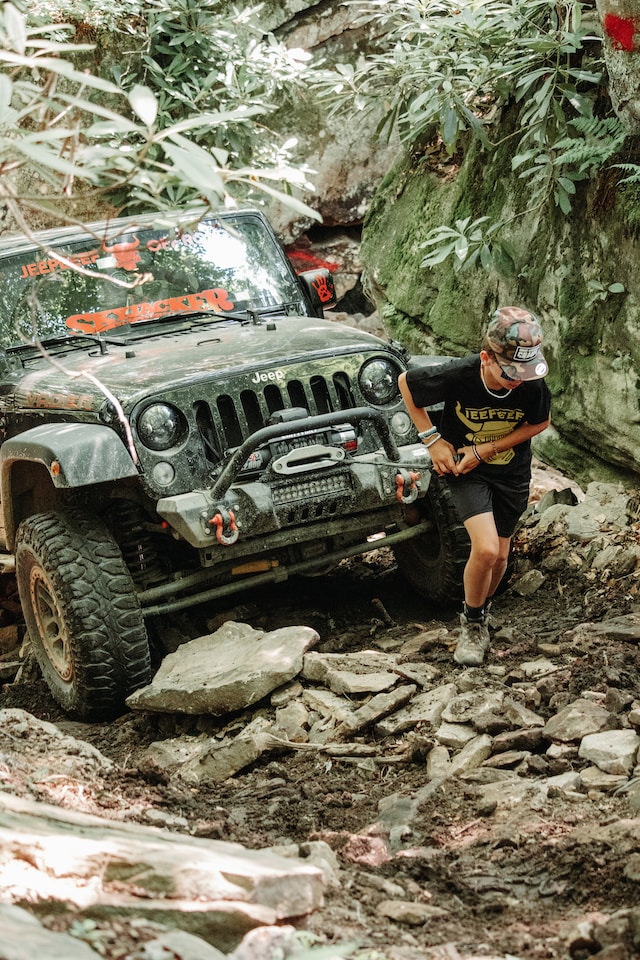
Essential Tools for Self-Recovery
Winches: A winch is a powerful tool that can pull your vehicle out of sticky situations, be it mud, sand, or snow. It’s a lifeline when traveling solo or in areas where help isn’t readily available.
Traction Mats: These are portable solutions that provide your tires with the necessary grip to move out of slippery or soft terrains.
High-Lift Jacks: For situations where your vehicle needs to be lifted, either to change a tire or to place supports underneath, a high-lift jack is invaluable.
Keeping the Vehicle in Top Shape During Expeditions
Regular maintenance ensures that your vehicle remains reliable throughout your journey. Here are some aspects to consider:
Regular Inspections: Before and after each trip, inspect your vehicle. Check the brakes, tires, lights, and fluid levels.
Spare Parts: Always carry essential spare parts like fuses, belts, and hoses. A spare tire, of course, is a must.
Tool Kit: Equip yourself with a comprehensive tool kit. It should include basic tools and specific ones tailored to your vehicle’s needs.
Know Your Vehicle: Familiarize yourself with your vehicle’s mechanics. Understanding the basics can be the difference between a minor hiccup and a trip-ending issue.
Cooking and Food Storage: Fueling Your Overlanding Adventure
When you’re out in the wilderness, miles away from the nearest restaurant or grocery store, having a reliable system for cooking and storing food becomes paramount. Overlanding isn’t just about the journey; it’s also about enjoying the simple pleasures, like a warm meal under the stars. Let’s dive into the essentials of cooking and food storage for your overlanding escapades.
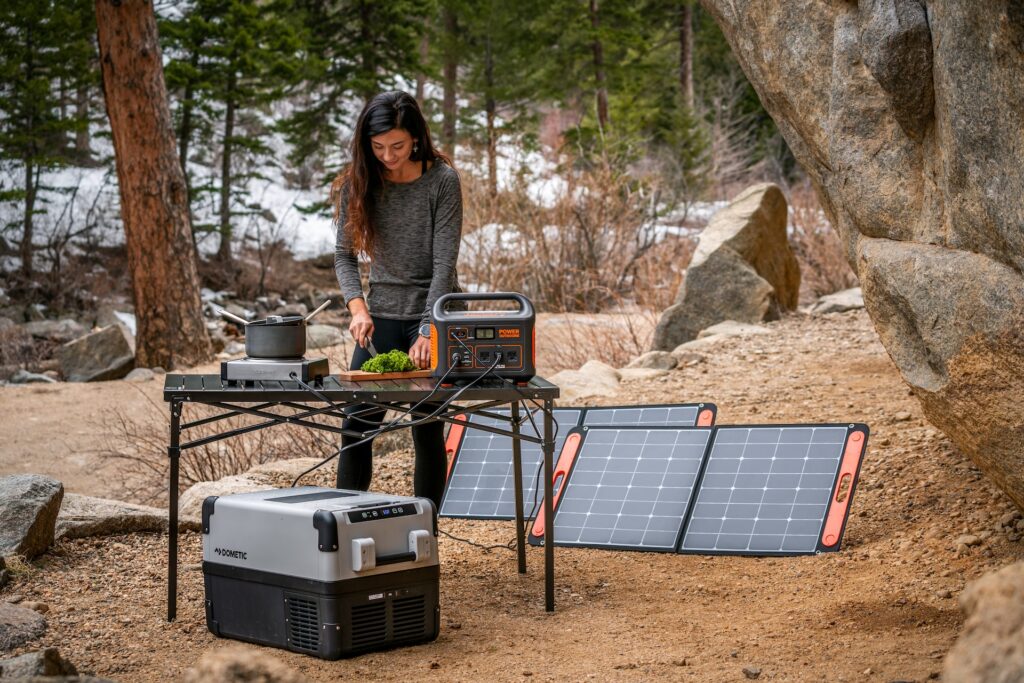
Portable Cooking Solutions
Portable Stoves: Compact and efficient, portable stoves are a must-have. They come in various fuel types, including propane, butane, and multi-fuel options.
Campfire Grills: For those who prefer the traditional way, a foldable campfire grill can be used to cook directly over an open flame.
Food Storage Essentials
Coolers: Investing in a high-quality cooler ensures your perishables stay fresh. Some advanced models even offer electric cooling capabilities.
Dry Storage Containers: Protect your non-perishables from pests and moisture with airtight containers. They help organize and maximize space.
Water Storage: Hydration is key. Ensure you have ample water storage solutions, from jerry cans to collapsible water containers.
Safety and Hygiene in Outdoor Cooking
Always ensure you’re cooking in a safe environment. Keep a fire extinguisher handy and maintain a clean cooking space to avoid attracting wildlife. Remember to store food securely, especially in areas known for bears or other curious animals.
Water Storage and Filtration: Quenching Thirst in the Wild
Water is the essence of life, especially when you’re on an overlanding adventure. Whether you’re crossing arid deserts or navigating dense forests, having access to clean, drinkable water is paramount. Let’s explore the vital aspects of water storage and filtration for overlanders.
Storing Water: Containers and Solutions
Jerry Cans: These are robust containers designed specifically for transporting water. Their sturdy build ensures no leakage, making them a favorite among overlanders.
Collapsible Water Containers: Ideal for saving space, these containers can be expanded when filled and collapsed after use. They’re perfect for camp setups where you might need a larger water reserve for a short time.
Water Bladders: These are flexible water storage solutions that can be fitted inside or outside your vehicle. They’re great for maximizing storage in tight spaces.
Ensuring Purity: Filtration Systems
Portable Water Filters: These are handheld devices that can filter out contaminants, making natural water sources safe to drink. They’re essential for those venturing into remote areas.
Gravity-fed Filtration Systems: These systems use gravity to push water through a filter, making them ideal for larger quantities of water at campsites.
UV Water Purifiers: These devices use ultraviolet light to kill bacteria and pathogens, ensuring the water is safe to drink.
Power and Lighting: Illuminating and Energizing Your Overlanding Journey
In the vast expanses of the great outdoors, the sun won’t always be your sole source of light, and your vehicle’s battery won’t be the only power you need. As night falls or when you’re setting up camp in shaded areas, having reliable power and lighting solutions becomes essential. Let’s delve into the key components of power and lighting for overlanding.
Power Solutions for Overland Vehicle Gear
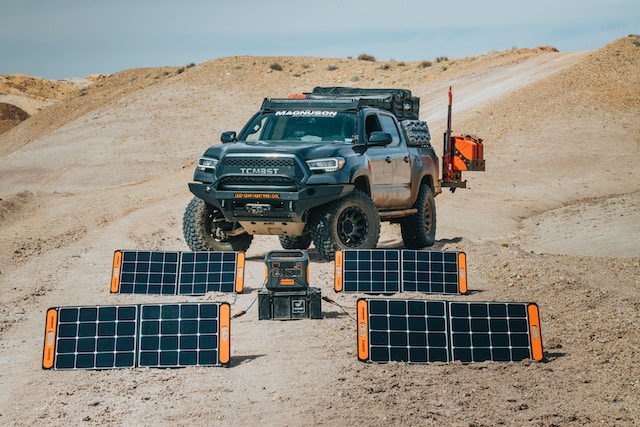
Portable Solar Panels: Harness the power of the sun to recharge your devices. These panels are foldable, lightweight, and can be set up anywhere you get sunlight.
Power Banks: These are portable batteries that store power for charging devices like smartphones, cameras, and even some appliances. They’re essential for those extended trips away from civilization.
Vehicle Inverters: Convert your vehicle’s DC power to AC, allowing you to use standard plugs and charge larger devices or appliances.
Lighting Up the Night
LED Camp Lights: These are energy-efficient lights that can illuminate a large area, making them perfect for setting up camp or cooking after dark.
Headlamps: Keep your hands free while navigating or working in the dark. Headlamps are essential for those nighttime tasks or hikes.
Spotlights: For those moments when you need intense, focused light, especially during vehicle recovery operations at night.
Safety and First Aid: Preparing for the Unexpected on the Trail
The thrill of overlanding often comes with its set of challenges and unpredictable situations. While the journey is the reward, ensuring safety and being prepared for emergencies is paramount. Here’s a deep dive into the essential safety and first aid gear every overlander should have on hand.
Safety Gear Essentials
Safety Flags: Especially crucial in dune and desert terrains, these flags ensure that your vehicle is visible to others, reducing the risk of collisions.
Reflective Markers and Triangles: In case of a breakdown, these can be placed around your vehicle to alert other drivers, especially in low-light conditions.
Fire Extinguisher: A must-have for any vehicle, ensuring you’re prepared to tackle small fires before they become unmanageable.
First Aid: Being Ready for Medical Emergencies
Comprehensive First Aid Kit: This should include bandages, antiseptics, pain relievers, tweezers, scissors, and other essential medical supplies. It’s also wise to customize your kit based on the specific needs of your group and the nature of your trip.
Snake Bite Kit: If you’re venturing into areas known for venomous snakes, this kit can be a lifesaver, providing immediate first aid before seeking medical attention.
Emergency Thermal Blankets: These lightweight, reflective blankets can retain body heat, crucial for treating shock or hypothermia.
Storage and Organization: Streamlining Your Overlanding Setup
When embarking on an overlanding expedition, space is often at a premium. Every inch of your vehicle becomes valuable real estate. Efficient storage and organization not only ensure you can carry all your essentials but also make accessing them hassle-free. Let’s explore the key components that will help you maintain order amidst the adventure.
Vehicle Storage Solutions
Roof Racks and Cargo Boxes: These are perfect for storing bulky items like tents, chairs, and spare tires. They utilize the vehicle’s roof space, freeing up room inside.
Drawer Systems: Installed in the rear of the vehicle, these drawers provide organized storage for tools, cooking equipment, and other essentials. They’re especially useful for keeping items secure and easily accessible.
Backseat Organizers: These hang behind the front seats and offer pockets and pouches for smaller items like maps, snacks, and gadgets.
Gear Organization Essentials
Storage Bins and Containers: Stackable and durable, these are ideal for categorizing gear, food, and supplies. Transparent ones allow you to see the contents without opening them.
Compression Sacks: Perfect for clothing and sleeping bags, these sacks reduce volume, making it easier to pack and store your camping lifestyle gear.
Modular Packing Systems: These are sets of bags or pouches designed to fit together, optimizing space and ensuring every item has its place.
Clothing and Personal Gear: Dressing for the Overlanding Adventure

Overlanding is as much about the journey as it is about the destination. As you traverse diverse terrains and face varying weather conditions, your clothing and personal gear play a pivotal role in ensuring comfort and safety. Let’s delve into the essentials that every overlander should pack.
Layering: The Key to Comfort
Base Layers: These are the first line of defense against the elements. Moisture-wicking materials help keep you dry by drawing sweat away from the skin, essential in both hot and cold conditions.
Insulating Layers: Ideal for colder climates, these layers trap heat, ensuring you stay warm. Materials like fleece or down are popular choices.
Outer Layers: These are your protective shields against wind, rain, and snow. Look for waterproof, breathable materials to ensure comfort.
Personal Gear Essentials
Footwear: Depending on the terrain, you’ll need sturdy hiking boots for rugged trails or breathable shoes for desert treks.
Hats and Sunglasses: Protect yourself from the sun’s harsh rays. A wide-brimmed hat and UV-protective sunglasses are must-haves.
Backpack: A daypack is essential for short hikes and excursions. Ensure it has multiple compartments for organization and is hydration-compatible.
Personal Hygiene Kits: These should include essentials like biodegradable soap, toothbrush, toothpaste, and personal wipes. Staying clean is crucial for comfort and health.
Environmental Responsibility Gear for Overlanding: Equipping for a Sustainable Journey
Overlanding is not just about the journey, but also about the footprint we leave behind. As we venture into nature’s untouched terrains, it’s crucial to be equipped with gear that minimizes our environmental impact. Here’s a look at the essential gear that every eco-conscious person should consider.

Eco-Friendly Camp Cleanup Kits
Leaving no trace is the golden rule of overlanding. Eco-friendly cleanup kits ensure you pack out all waste, leaving campsites pristine.
Portable Fire Pans
Campfires are a staple of outdoor adventures, but they can scar the land. Portable fire pans protect the ground and contain ashes.
Compact Portable Toilet Systems
In areas without facilities, portable toilet systems prevent contamination of natural water sources and the surrounding environment.
Eco-Friendly Trail Markers
Instead of marking trails with non-biodegradable items, use eco-friendly trail markers that naturally decompose over time.
Solar-Powered Charging Stations
Harness the power of the sun to charge your devices. It’s sustainable and reduces the need for non-renewable energy sources.
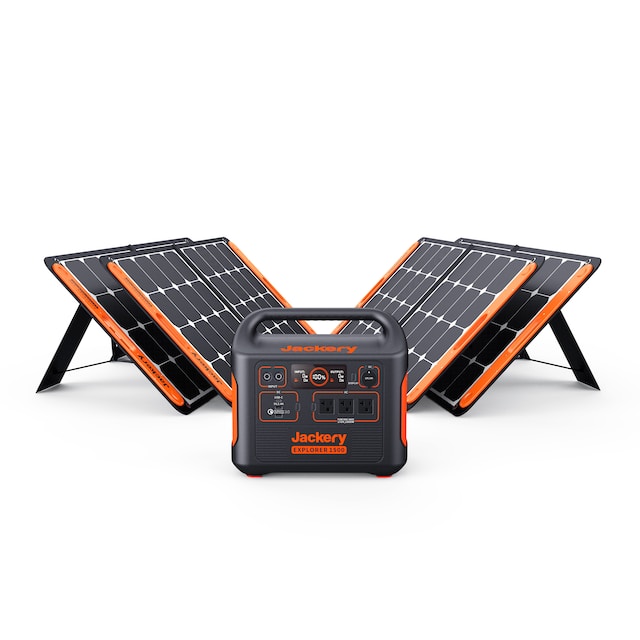
Conclusion: Sustainable Overlanding Gear For Your Adventures
Is Overlanding is more than just an adventure? To me it is a journey that brings us closer to the heart of nature. As we traverse rugged terrains and witness the raw beauty of the outdoors, it’s imperative to remember the impact our actions can have on these pristine landscapes. Equipping ourselves with the right gear is just the beginning. The true essence of overlanding lies in the respect we show to the environment and the sustainable practices we adopt.
By prioritizing eco-friendly gear, adhering to the principles of “Leave No Trace,” and continuously educating ourselves about responsible exploration, we not only ensure our safety but also play a part in preserving the natural wonders for generations to come. So, as you gear up for your next overlanding expedition, remember that the best adventures are those that harmonize with nature, leaving lasting memories without leaving a mark.
Gear up, tread lightly, and let the spirit of responsible overlanding guide your journey.

